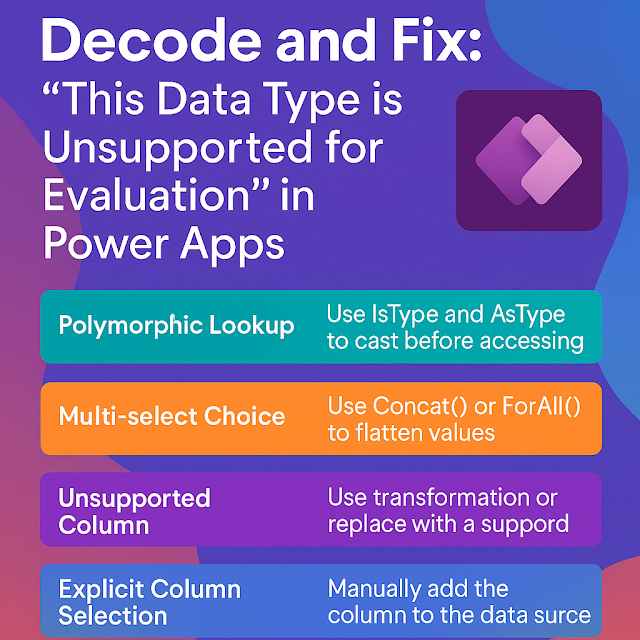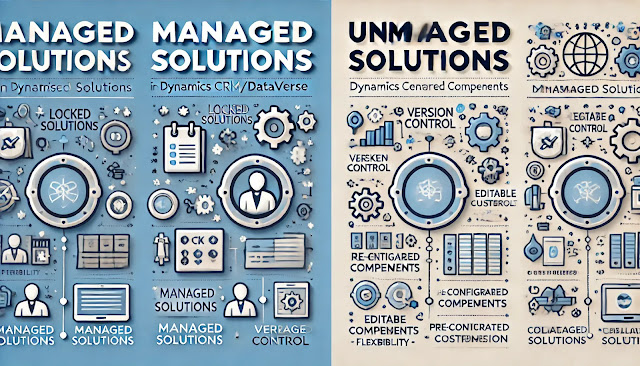Microsoft Dynamics 365 Customer Experience Analyst : Configure opportunity close
In Dynamics 365 Sales, Opportunity Close represents the final stage in the sales cycle where a salesperson records the outcome of an opportunity, either as Won or Lost. This action is more than just marking a record—it captures critical details such as the status reason, revenue, competitor information, and closure date. By properly closing opportunities, organizations gain valuable insights into sales performance, win/loss trends, and pipeline accuracy. Opportunity close records also provide historical data that helps refine sales strategies, improve forecasting, and support business decision-making, making it a vital step in maintaining sales discipline and data integrity.
Closing an opportunity correctly in Dynamics 365 / Dataverse is more than flipping a checkbox — it records the outcome, captures the final data (actual revenue, close date, reason), keeps audit history (the opportunityclose activity), and often triggers downstream processes (create order, invoice, integrations). Below I’ll cover the concepts, UI configuration, programmatic options, BPF/automation patterns, testing, and best practices so you can implement a robust “close opportunity” experience.
1) Key concepts (quick reference)
State vs Status Reason
- statecode = lifecycle state (Active / Won / Lost).
- statuscode = status reason (business-specific reasons like “No Budget”, “Competitor”, “Price Objection”).
- OpportunityClose (activity)
Platform activity record that represents the close action and stores details (subject, actual revenue, close date).
Platform messages / actions
The platform exposes Win Opportunity / Lose Opportunity messages (SDK & Web API) that should be used when programmatically closing an opportunity. They ensure platform-level behavior (create opportunityclose activity, fire events, update rollups).
Why use platform messages?
They maintain system integrity (rollups, pipeline calculations, audit), generate the proper opportunityclose record, and trigger plugin/workflow events in a consistent way.
2) Business / functional requirements to capture before configuring
Decide and document:
- Which fields are required to close (e.g., Actual Revenue, Close Date, Status Reason).
- Business rules for “Won” (e.g., must have a linked Order or Quote) vs “Lost” (reason mandatory).
- Who can close (roles/approvers).
- Downstream actions (create Order, notify RM, post to general ledger, call external API).
3) Configure Status & Status Reasons (UI steps)
(Modern Maker portal or classic customizations; names may vary slightly by UI)
1. Design status reason values (for Won and Lost).
- Example: For Lost → “No Budget”, “Product Mismatch”, “Competitor”. For Won → “Accepted Price”, “Agreement Signed”.
2. Add/update Status Reasons
- Power Apps maker portal: Make.PowerApps.com → Data → Tables → Opportunity → Columns / Choices (or Classic: Settings → Customizations → Customize the System → Entities → Opportunity → Status Reason).
- Add new options and map them appropriately to the state (Won or Lost).
3. Make fields required when closing
- Use Business Rules or JavaScript to require fields conditionally (e.g., if status = Lost then Status Reason is required).
4. Command bar / Ribbon
- Out-of-the-box buttons “Close as Won” and “Close as Lost” exist. If you need custom behavior, either hide those and create custom ribbon commands or add extra buttons that run client logic / call flow.
4) Business Process Flow (BPF) integration
Use the BPF to guide users to close the opportunity reliably:
- Add a final stage named “Close” with required fields (Actual Revenue, Close Date, Status Reason).
- Add automation on stage exit (Power Automate / workflow) to validate prerequisites.
- Optionally show a confirmation dialog before calling the close action.
BPF keeps the UI guided and ensures required data is captured before the actual close action.
5) Programmatic options to close an Opportunity
A. Recommended (SDK / Plugin) — WinOpportunityRequest / LoseOpportunityRequest
Use these messages in server-side code (plugins, custom workflow activities) to close properly.
C# plugin snippet (conceptual):
using Microsoft.Xrm.Sdk;
using Microsoft.Crm.Sdk.Messages;
using Microsoft.Xrm.Sdk.Query;
var oppRef = new EntityReference("opportunity", opportunityId);
// create the opportunityclose activity
var oppClose = new Entity("opportunityclose");
oppClose["subject"] = "Closed as Won";
oppClose["opportunityid"] = oppRef;
oppClose["actualrevenue"] = new Money(12500m);
oppClose["actualclosedate"] = DateTime.UtcNow;
// status: provide the appropriate status reason option value
var winRequest = new WinOpportunityRequest {
OpportunityClose = oppClose,
Status = new OptionSetValue(statusReasonOptionValue) // status reason numeric value
};
_service.Execute(winRequest);
Why: This executes the platform message so Dataverse generates the opportunityclose activity and sets state/status the supported way.
B. Web API (Dataverse) — invoke action
You can call the OData action:
POST [Org URI]/api/data/v9.2/opportunities(<id>)/Microsoft.Dynamics.CRM.WinOpportunity
Content-Type: application/json
{
"OpportunityClose": {
"subject": "Closed as Won",
"opportunityid@odata.bind": "/opportunities(<id>)",
"actualrevenue": { "value": 12500 }
},
"Status": <statusReasonOptionValue>
}
Use OAuth token for authentication.
This is useful for Power Automate custom HTTP calls or middleware.
C. Power Automate (low-code)
Options:
- Preferred: Use an HTTP / Dataverse action to invoke the WinOpportunity action (as above). This preserves platform behavior.
- Not recommended: Directly setting `statecode/statuscode` via Update — this will not create an opportunityclose activity and can break rollups/events.
Flow example:
1. Trigger: When a row is modified (Opportunities) (Dataverse connector).
2. Condition: if user changed `status` to "Won" (or Status Reason equals chosen value).
3. Action: HTTP (Make an HTTP request to Dataverse Web API) or Perform a bound action to call WinOpportunity.
4. Post-actions: Create Order, send emails, log to Audit table.
6) Additional configuration: Create Order, Link Quote etc.
If business requires immediate order creation when an opportunity is won:
- Option A: Use WinOpportunityRequest then create salesorder (Order) in plugin or Power Automate with link to opportunity.
- Option B: Use a workflow triggered on statuschange to create order and copy fields (billing, shipping, line items).
Ensure product line items (OpportunityProducts) are mapped to OrderProducts properly — use server code to copy line items and pricing, or use existing platform functions if available.
7) Security considerations
- Ensure users who perform close have Write on opportunities and Create on opportunityclose (if creating activity).
- Consider Field-level security for sensitive fields (account numbers, card details) — only allow certain roles to view them.
- Audit the close action (enable Auditing on Opportunity and the OpportunityClose activity).
8) Validation & testing checklist (UAT)
- Closing via UI (Close as Won/Lost) creates an opportunityclose record.
- Status and Status Reason set correctly.
- BPF completes / moves to end stage when closed.
- Plugins/Flows triggered exactly once (watch for double-firing).
- Creation of Order/Quote (if required) with correct line items and pricing.
- Notifications sent (email/SMS) and integration messages queued.
- Rollup fields and pipeline metrics update correctly.
- Security: only allowed roles can close.
- Error handling: if integration fails, opportunity remains in a recoverable state and operator can retry.
9) Common pitfalls & tips
- Don’t just update statecode/statuscode — use Win/Lose actions to keep platform semantics intact.
- Avoid synchronous integration to external systems that can timeout — use async queues (Service Bus / Azure Function) and set Integration Status on the opportunity.
- Watch for duplicate automation — both a plugin and a Power Automate flow can respond to the same event and cause repeated behavior. Prefer one server-side orchestrator.
- Make Lost reasons actionable — pick a constrained set of Status Reasons to enable good reporting.
- Use BPF validation to prevent accidental closes with missing data.
10) Example implementation pattern (recommended)
1. BPF final stage requires Actual Revenue and Status Reason.
2. User clicks “Close as Won” → client-side validation shows missing fields.
3. On stage completion, a plugin (or Power Automate) calls WinOpportunityRequest → creates opportunityclose.
4. Plugin enqueues an Integration message to Service Bus to create an Order in CBS asynchronously.
5. On integration success, update `Integration Status` and write Dispatch info. On failure, leave a retry queue and update `Integration Status = Failed`.
6. Dashboards show won/lost trend and top lost reasons.
Summary
In Dynamics 365 Sales, the Opportunity Close process marks the final stage of the sales lifecycle, where a salesperson records the outcome of an opportunity—whether it resulted in a win or a loss. This process helps capture essential details about the deal’s closure, supports performance analysis, and maintains accurate sales forecasting.
When closing an opportunity, users provide details such as:
- Status: Won or Lost
- Close Date: The actual date the opportunity was finalized
- Actual Revenue: The total revenue from the closed deal
- Competitor Information: Who the deal was lost to (if applicable)
- Description or Remarks: Context or notes about the closure decision
The system automatically creates an Opportunity Close record, which is related to the original opportunity. This record helps in tracking historical sales performance, refining sales strategies, and analyzing reasons for winning or losing deals.
Additionally, workflows or Business Process Flows (BPFs) can be configured to ensure validation, approval, or additional actions (such as triggering notifications or creating follow-up tasks) during the close process.












Comments
Post a Comment